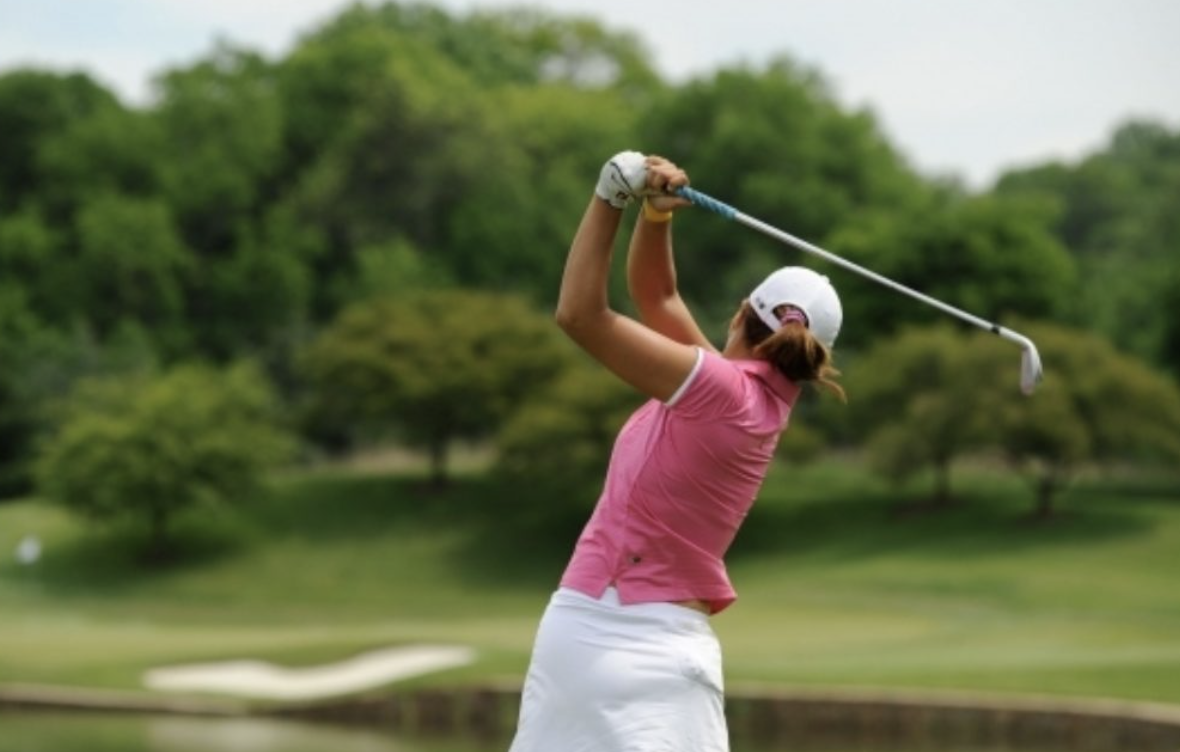CATEGORIES
- Latest News
- Interviews
- Golf Travel
- Features
- Juniors
- Competition
- Events
- Health
- Equipment
- Fashion
- Archive
INFORMATION
CURRENT ISSUE

SUBSCRIPTIONS



Words by: Anne-Lise Bidou - LPGA Tour Physiotherapist
Golf is a game of precision and finesse, and that demands a unique mastery of balance.
What is the role of balance in golf?
Balance is foundational in golf—it underpins every aspect of a golfer's game, from driving off the tee to sinking that critical putt. In essence, balance in golf refers to the ability to maintain a stable and controlled position throughout the swing, ensuring optimal power, accuracy, and consistency.
Moreover, balance extends beyond the swing. It effects every aspect of the game – from navigating undulating terrain to adapting to adverse weather conditions.
Here are a few key elements about the importance of balance in golf:
Are you now convinced that it would be very beneficial to work on your balance? Okay. It’s time to get straight to the point. Let’s perform some Single leg exercises! Single leg balance exercises help strengthen the stabilising muscles in the legs, ankles, and hips, which are crucial for maintaining balance throughout the swing.
Weaknesses or imbalances in the lower body can increase the risk of injury, particularly in the knees, hips, and lower back. By strengthening the muscles around these vulnerable areas, golfers can reduce the likelihood of common golf-related injuries and enjoy a longer, pain-free playing career.
In addition, the core plays a crucial role in stabilizing the body and transferring energy from the lower body to the upper body during the golf swing. Single leg balance exercises engage the core muscles to maintain balance and stability, thus improving core strength and coordination. A strong core enables golfers to generate more rotational power and maintain a consistent swing plane, leading to improved performance and distance control.
Here is a series of exercises, that you can incorporate into a golf fitness program to help you improve your balance, stability, and overall performance on the course. Aim to incorporate single leg balance exercises into your training regimen and gradually increase the difficulty as you progress.
1. Single leg balance with opposite hip Flexion - 3 sets, 8-12 reps
Stand side on to a bench or machine that you can attach a band onto. Attach the band then place the other end around your outside ankle. Stand tall and lift your outside leg up slowly, bending at the hip and bringing the knee towards your chest against the resistance of the band or cable, while maintaining your posture. Hold this position for a moment, then slowly lower the leg back down to the starting position. Repeat the movement 8-12 times on each leg.


2. Single leg Sit-to-Stand - 3 sets, 8-10 reps
Stand on one leg in front of a bench or a sturdy chair. Slowly lower yourself into a seated position on the bench or chair behind you. Keep your chest lifted, and avoid rounding your back. Then, press through the heel of your supporting foot and push yourself back up to a standing position. Maintain a slow and controlled pace throughout the movement to maximise muscle engagement and balance challenge.


3. Side lunge to Single leg stance with Dumbbell - 3 sets, 8-10 reps
Stand on one leg, holding a dumbbell in the hand on the supporting side. Keep your core engaged and your shoulders pulled back. Take a wide step to the side with the foot opposite to the hand holding the dumbbell. As you step out, shift your body weight towards the lunging side, bending the knee and pushing your hips back to lower into a side lunge. Keep the opposite leg straight and the foot flat on the ground. As you lower into the side lunge, let the dumbbell hang down towards the ground, maintaining a neutral grip on the handle. Push through the heel of the lunging foot to return to the starting position. Hold the single-leg stance for a moment, maintaining your balance and stability. Then, repeat the movement.


4. Single leg Romanian DeadLift (RDL) with shoulder press – 3 sets, 8-10 reps
Stand on one leg while holding a dumbbell in the opposite hand. Begin the movement by hinging forward at the hips while simultaneously extending the lifted leg straight back behind you. Keep your back flat, and maintain a slight bend in the standing leg to help with balance. Lower the dumbbell towards the ground, keeping it close to your body. Continue hinging forward until your torso is parallel to the ground or until you feel a stretch in your hamstrings. Keep your hips square and avoid rotating them as you lower the dumbbell. Once you reach the bottom of the RDL, begin to straighten your standing leg and simultaneously press the dumbbell overhead into a shoulder press. Fully extend your arm overhead, keeping your core engaged and your spine neutral. Slowly lower the dumbbell back down to the starting position.


5. Single leg pallof press – 3 sets, 6 reps – Medium resistance
Attach a resistance band to a stationary anchor point at mid-chest height or use a cable machine. Stand on one leg, closest to the cable machine or band and hold onto the band or handle of a cable machine. Both hands are holding the resistance band or handle and placed against your torso. Your hip, knee and ankle are at 90 deg flexion on your non-bearing leg. Slowly extend your elbows out in front of you while maintaining your body upright, your trunk and pelvis aligned square to the band. Hold the outstretched position for 5 seconds. Focus on resisting rotation and keeping your torso stable despite the resistance pulling you towards the anchor point. Control the movement as you return to the starting position. Repeat the movement 6 times on each leg.


6. Side skater - 3 sets, 10-15 reps per side
Stand on one leg with your arms by your side. Take a lateral (sideways) hop, landing softly on the foot that you've shifted your weight onto. Keep the opposite foot slightly elevated off the ground, with the knee bent. As you hop to the side, swing your arms diagonally across your body in the direction of the jump to help generate momentum and balance. Upon landing on the side, bend your knee to absorb the impact and maintain stability. Keep your chest up and your back straight. Immediately push off the foot you landed on and hop laterally to the opposite side, swinging your arms in the opposite direction to maintain momentum and balance. Continue alternating sides with a fluid, rhythmic motion, hopping from side to side while maintaining control and balance.

